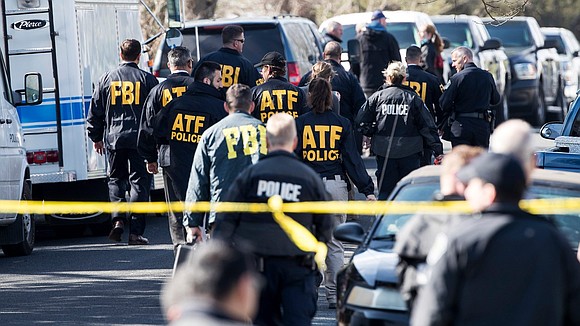5 bombs, many questions: What we know about the Texas explosions
CNN/Stylemagazine.com Newswire | 3/20/2018, 11:20 a.m.

By Holly Yan, CNN
(CNN) -- Now we know the explosions could strike anyone.
The fourth Austin bombing in less than a month was detonated by a tripwire along a residential street, police said -- prompting fears that any pedestrian could become the next victim.
And early Tuesday morning, yet another bomb exploded -- this time at a FedEx facility about an hour away near San Antonio.
Here's what we know about the bombings, and the questions that remain unanswered:
What we know
Every blast has killed or injured victims: The first explosion killed 39-year-old Anthony Stephan House on March 2.
The second blast came more than a week later, on the morning of March 12, killing 17-year-old Draylen Mason.
The third blast happened several hours later and critically injured a 75-year-old woman.
Those three blasts all happened after someone left explosives-laden packages on the victims' doorsteps.
On Sunday night, a fourth bomb blew up and injured two men walking in a residential neighborhood.
And on Tuesday morning, a FedEx employee suffered minor injuries when a package exploded in Schertz, about an hour away from Austin.
The packages on doorsteps weren't mailed: Instead, they were hand-delivered and left on people's doorsteps, likely during overnight hours. The blast at the FedEx facility is the first bombing involving a shipping carrier.
The FedEx facility wasn't targeted: The FedEx facility was not the intended target of the Tuesday morning blast, Schertz police Chief Michael Hansen said. He said the package was traveling along an automatic conveyor when it exploded.
Authorities suspect the bombings may be related: Shortly after the fifth bombing, FBI San Antonio spokeswoman Michelle Lee said that "we suspect it is related to our investigation" into the previous bombings.
What we don't know
Whether these are acts of terrorism: For an attack to be classified as terrorism, it must be motivated by a desire to cause political or social change. And since police don't know the motives behind the bombings yet, it's impossible to label any of them as terrorism right now.
"Obviously the goal with terror is to make people fearful, and that's obviously going on here," CNN law enforcement analyst James Gagliano said. "But you want to get to the motivation -- was it political? Was it social? What was the motivation? And police obviously don't have that yet."
What types of explosives were used: Police have not detailed what the explosive devices were made from, or what they looked like. Small bomb fragments strewn across wide areas have made the investigations challenging.
What triggered several of the devices: Some of the packages left on people's doorsteps exploded at different times after they were discovered.
In the second explosion, a package was brought into the kitchen and opened before it exploded and killed Mason.
But in the third explosion, the device exploded immediately after the elderly woman picked up the package.
It's also a mystery why the package at the FedEx facility blew up when it did. "We are not providing any additional specific information about this package at this time," company spokesman Jim McCluskey said Tuesday morning.
Whether some of the bombings are hate crimes: The two slain victims were both African-American, and the woman wounded in the third attack is Hispanic. Police have not determined if those attacks are hate crimes but said it's a possibility because of the victims' ethnicities.
But Sunday evening's explosion took place in predominantly white neighborhood and injured two white men, police said. The fact that a tripwire set it off meant anyone walking by could have been maimed.
While the demographics of the Austin victims run the gamut, "We are clearly dealing with what we expect to be a serial bomber at this point," Austin police Chief Brian Manley said.
Who's behind the attacks: So far, no arrests have been made. Manley asked any neighbors with security camera footage to call police.
But the bombing that used a tripwire could give clues about the assailant, the global think tank Stratfor Threat Lens said.
"The device's success, despite significantly different design, further suggests that the bomb maker behind these attacks is an accomplished one, and has likely to have received some training, perhaps as a military or police explosive ordnance disposal technician," Stratfor said.







